Author: Juha Honkala
Aleksi Mainio: Terroristien pesä. Suomi ja taistelu Venäjästä 1918-1939. [Terrorist lair. Finland and the fight for Russia 1918-1939.]
29 June 2015 | Mini reviews, Reviews
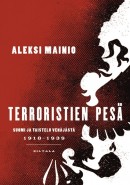 Aleksi Mainio
Aleksi Mainio
Terroristien pesä. Suomi ja taistelu Venäjästä 1918-1939. [Terrorist lair. Finland and the fight for Russia 1918-1939.]
Helsinki: Siltala, 2015. 380pp., ill.
ISBN 987-952-234-288-1
€34.95, hardback
After the October Revolution in Russia in 1917 and the rise of the Bosheviks to power, thousands of their opponents fled the country. The historian Aleksi Mainio’s book describes how many of the emigrants, who represented not only monarchists but many other ideologies, attempted to act against Soviet Russia through espionage and even terrorism from Finland and partly with funding from western powers. Their fighting organisations sent intelligence officers and bomb squads across the eastern border, often admittedly with poor results as the organisations had often been infiltrated by Soviet-sympathising double agents. The Tartu peace treaty between Finland and Russia, subsequently the Soviet Union, was signed in 1920. Nevertheless, many officials of the security police and the military were prepared to approve the emigrants’ attempts to weaken Soviet Russia. Some counter-revolutionaries also acted as assistants to the Finnish or, for example, British intelligence services. On the other hand, Finnish officials put a stop where necessary to illegal activities by emigrants. Mainio’s book, which is based on his doctoral thesis, paints a fascinating picture of espionage activity in Finland between the wars, although the sheer volume of detail and characters pose a challenge to forming an overview of the situation.
Jonna Pulkkinen: Kieltolaki. Kielletyn viinan historia Suomessa. [Prohibition. A history of prohibited liquor in Finland.]
29 June 2015 | Mini reviews, Reviews
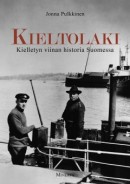 Jonna Pulkkinen
Jonna Pulkkinen
Kieltolaki. Kielletyn viinan historia Suomessa. [Prohibition. A history of prohibited liquor in Finland.]
Helsinki: Minerva, 2015. 213pp., ill.
ISBN 978-952-312-112-6
€32,90, hardback
Prohibition of the making and selling of strong liquor was in force in Finland between 1919 and 1932. In this approachable book, the journalist and non-fiction writer Jonna Pulkkinen charts Finnish attitudes to alcohol over the ages and describes the origin and effects of prohibition. Total abstinence was popular in Finland in the second half of the 19th century, and was adopted in particular by the working class. Limits on alcoholic consumption were first imposed as early as the First World War. When a prohibition law that had been passed a couple of years earlier came into effect in newly independent Finland in 1919, however, support had already begun to dwindle. Home stills proliferated, smuggling from abroad was considerable and broadly accepted, and enforcing the law was difficult. Pulkkinen has numerous interesting and even comical examples that flouted the law on prohibition. The law was broken in all social classes, the use of liquor and crime increased throughout the country, and taxation income on alcohol was lost. As public criticism grew, an advisory referendum was held in 1931, and as a result the prohibition law was abolished the following year.
Risto Uimonen: Juha Sipilä. Keskustajohtajan henkilökuva. [Juha Sipilä. Portrait of a centrist leader.]
23 June 2015 | Mini reviews, Reviews
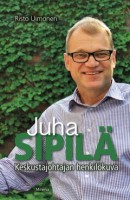 Risto Uimonen
Risto Uimonen
Juha Sipilä. Keskustajohtajan henkilökuva. [Juha Sipilä. Portrait of a centrist leader.]
Helsinki: Minerva, 2015. 431pp., ill.
ISBN 978-952-312-125-6
€33,90, hardback
Juha Sipilä was an information technology millionaire and business entrepreneur when, in 2011, he became, at his first attempt, a member of parliament for the Finnish Centre Party, which represents principally country people, is considered conservative in its values and had lost support. The very next year this engineer from northern Finland was elected chairman of the party. Through, among other things, numerous interviews, the experienced non-fiction writer and journalist Risto Uimonen builds a nuanced portrait of a party leader with a strongly ethical value-system that lies on his Christian faith. Characteristic of Sipilä are informality, consideration of others, practicality and the ability to present issues clearly and pithily. In his party, he has focused on issues that are important to him, such as the promotion of biotechnology. Uimonen offers a fluent portrait of the background to Sipilä’s life and surprising career development, to which, as the book was being completed, a family tragedy brought darker tones. After the publication of the book, Sipilä led the Centre Party to victory in the parliamentary elections of April 2015. As chairman of the biggest party, he began to form a government and has already been praised for his efficiency.
Osmo Soininvaara: Jäähyväiset eduskunnalle [Farewell to Parliament]
23 June 2015 | Mini reviews, Reviews
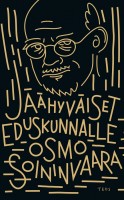 Osmo Soininvaara
Osmo Soininvaara
Jäähyväiset eduskunnalle [Farewell to Parliament]
Helsinki: Teos, 2015. 247pp.
ISBN 978-951-851-649-4
€33, hardback
Long-time member of the Finnish Parliament Osmo Soininvaara, who has also worked as a minister, decided not to participate in the 2015 parliamentary elections. In this timely book, this expert in social politics and influential figure in the Green Alliance examines the reasons for political alienation, analyses politics more broadly and presents his own medicines for improving the situation. According to Soininvaara, the Finnish parliament has become superficial and publicity-seeking and there is much room for improvement in its work. The six-party ‘rainbow coalition’ of the outgoing parliament was incapable of action and the two largest, leftist, parties were continually at loggerheads, with the Social Democrats, in particular, demanding reforms. The divided opposition was toothless. Finland’s economy weakened still further, and it proved impossible to implement the administration’s central projects, reform of the social and health systems and of municipal administration, let alone others, among them the structural administrative changes essential for economic recovery. Writing fluently, Soininvaara examines politics and Parliament from many different perspectives, arguing eloquently for his views.
Kai Häggman: Pieni kansa, pitkä muisti. Suomalaisen Kirjallisuuden Seura talvisodasta 2000-luvulle. [Small nation, long memory. The Finnish Literature Society from the Winter War to the 21st century.]
16 June 2015 | Mini reviews, Reviews
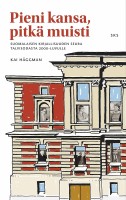 Kai Häggman
Kai Häggman
Pieni kansa, pitkä muisti. Suomalaisen Kirjallisuuden Seura talvisodasta 2000-luvulle. [Small nation, long memory. The Finnish Literature Society from the Winter War to the 21st century.]
Helsinki: SKS, 2015. 524pp., ill.
€48, hardback
The Finnish Literature Society, publisher of Books from Finland, is of unique importance as a collector of Finnish folk poetry and folk tradition, a publisher of literature and a promoter of research into the Finnish language and history; today it is known particularly as one of the most important publishers of the humanities. The historian Kai Häggman has published many works about publishing, and his new book, the third volume of a history of the Finnish Literature Society, describes events from the Second World War to the present day. Among other things, the book describes the Finnish Literature Society’s activities in conquered Eastern Karelia in what was then considered part of the Greater Finland, and its ideological development from narrow nationalism to the broader outlook of the post-war decades. In the late 20th century the generation that had lived through the war was replaced by younger people, and the study of the folk tradition embraced aspects of modern society; methods, too, were renewed. The book also casts light on relationships between Finnish scholars and those from kindred nations such as Estonia. Häggman gives a lively all-round view of the work of the Society as part of Finnish cultural history as a whole, emphasising the importance of the most important scholars, and not forgetting the occasional infighting.
Antero Holmila & Simo Mikkonen: Suomi sodan jälkeen. Pelon, katkeruuden ja toivon vuodet 1944-1949. [Finland after the war, 1944-1949. Years of fear, bitterness and hope.]
16 June 2015 | Mini reviews, Reviews
 Antero Holmila – Simo Mikkonen
Antero Holmila – Simo Mikkonen
Suomi sodan jälkeen. Pelon, katkeruuden ja toivon vuodet 1944-1949. [Finland after the war, 1944-1949. Years of fear, bitterness and hope.]
Helsinki: Atena, 2015. 2650., ill.
ISBN 978-952-300-112-1
€34, hardback
Finland lost the Winter War and the Continuation War that followed, to the Soviet Union, and was then forced to engage in the short Lapland War to expel its former allies, the Germans. The return to peace was not easy, as the historians Antero Holmila and Simo Mikkonen demonstrate in this highly readable book. Loss of territory meant finding homes for more than 400,000 evacuees elsewhere in Finland, and this was not achieved without difficulty. Soldiers were demobilised and had to redomicile themselves in ordinary life and work; there was a shortage of housing; and heavy war reparations were to be paid to the Soviet Union. Leading politicians accused of appeasing the Soviet Union during the war received prison sentences, which many people considered wrong. The work highlights the aspirations of the Communists and the internal fighting on the political left. The Communist party, which had been banned, returned to the political stage and was successful in the 1945 elections. The majority of the nation was fearful of the growth of influence of the Communists and, through them, the Soviet Union. However, the Social Democrats, competing with the Communists for workers’ votes, succeeded in gaining considerably more votes than the Communists as early as 1948. Although strikes and conflicts occurred, conditions settled down gradually towards the end of the 1940s and the nation began to get back on its feet.
Hengen paloa & painettua sanaa. Renqvist-Reenpäät kustantajina 1815–2015. [A burning spirit & the printed word. The Renqvist-Reenpääs as publishers 1815-2015.]
25 May 2015 | Mini reviews, Reviews
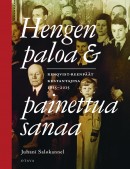 Juhani Salokannnel
Juhani Salokannnel
Hengen paloa & painettua sanaa. Renqvist-Reenpäät kustantajina 1815–2015. [A burning spirit & the printed word. The Renqvist-Reenpääs as publishers 1815-2015.]
Helsinki: Otava, 2015. 344 pp., ill.
ISBN 978-951-1-27838-2
47, hardback
Otava is currently Finland’s biggest book publisher, and is also active in the fields of newspapers, printing and bookshops. Almost from the beginning, the Reenpää (originally Renqvist) family has been at the head of this family business. Otava was founded in 1890, but 200 years ago a family forefather, Henrik Renqvist, who was studying for the priesthood began to publish religious books. In 1893 his grandson, Alvar Renqvist became Otava’s longstanding editorial director. Through his enthusiasm for Finnish-language literature and education, it was he who formed the basis for the publisher’s growth. His five sons and their sons guided the publishing house in the same spirit through some difficult times to the 21st century, and today the fifth generation is still at work there. The Reenpää family has had an important position in Finnish cultural life both as influential figures and as patrons. The writer Juhani Salokannel’s generously illustrated, well-designed work is based on wide source material and interviews with members of the Reenpää family and does not hold back from describing conflicts between some strong characters. The book is, indeed, a lively depiction of the Reenpääs’ history and work at Otava; a history of the publishing house as such has already been published.
Alpo Rusi: Etupiirin ote [The grip of the sphere of influence]
4 May 2015 | Mini reviews, Reviews
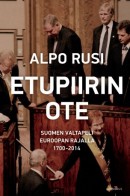 Alpo Rusi
Alpo Rusi
Etupiirin ote [The grip of the sphere of influence]
Helsinki: Gummerus, 2014. 411p.
ISBN 978-951-20-9715-9
€34.90, hardback
In his work Etupiirin ote, the scholar, writer and former ambassador Alpo Rusi provides an interesting and polemical analysis of Finland’s foreign and security policies, particularly with regard to its neighbour, Russia / the Soviet Union. His premise is that from the 18th century onward Finland has, sometimes more broadly, sometimes more narrowly, formed part of the Russian sphere of influence. He gives a brief account of the end of the period of Swedish rule (until 1809) and that of Russian rule (1809-1917), as well as of the early decades of Finnish independence. The main emphasis of the book is on the period beginning with the Second World War. Rusi has a personal perspective on much recent history. He bases his evaluations on many diverse, sometimes controversial, sources and expresses strong opinions in his account, for example, of ‘Finlandisation’, Soviet influence on Finnish politics with its negative side effects. Rusi strongly criticises decision-makers who, as late as the 1980s and 1990s, believed in the desirability of trade with the east and the permanence of the Soviet Union, despite signals to the contrary. Following the collapse of the Soviet Union, Finland joined the European Union, but even as a member its attitudes towards, for example, Nato and Russia, have been problematic in many ways. Rusi ends his book on the theme of the Ukraine crisis, presenting his own proposal for the development of foreign and security policies.
H. K. Riikonen: Nukuin vasta aamuyöstä. Olavi Paavolainen 1903–1964 [I didn’t fall asleep until morning. Olavi Paavolainen 1903–1964]
9 April 2015 | Mini reviews, Reviews
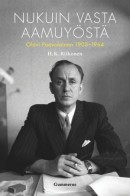 Nukuin vasta aamuyöstä. Olavi Paavolainen 1903–1964
Nukuin vasta aamuyöstä. Olavi Paavolainen 1903–1964
[I didn’t fall asleep until morning. Olavi Paavolainen 1903–1964]
Helsinki: Gummerus, 2014. 584 pp., ill.
ISBN 978-951-20-9714-2
€36.90 , hardback
In the 1920s and 1930s the author and journalist Olavi Paavolainen was a prominent cultural figure among young writers and artists. Published after the Second World War, his controversial war diary, Synkkä yksinpuhelu (‘Sombre monologue’, 1946), remains his best-known literary work. This book, by Professor of Literature H.K.Riikonen, focuses on Paavolainen’s literary activities and his oeuvre; it complements and deepens another biography of Paavolainen published in 2014, Tulisoihtu pimeään (‘A torch into the darkness’) by Panu Rajala. Riikonen thoroughly examines Paavolainen’s works as well as his post-war career as a director at the Finnish Broadcasting Company. At times Riikonen’s views, based on careful research, differ from Rajala’s interpretations. Riikonen also features the cultural life and eminent contemporary figures of Paavolainen’s era. At times the text, with its precise references and culture-historical details, meanders somewhat. The book includes plenty of quotes from Paavolainen’s works as well as interesting fact boxes related to the circumstances of his life.
Hannu Rautkallio: Mannerheim vai Stalin. Yhdysvallat ja Suomen selviytyminen 1939–1944 [Mannerheim or Stalin. The United States and Finland’s survival 1939–1944]
2 April 2015 | Mini reviews, Reviews
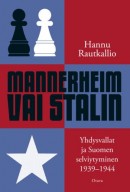 Mannerheim vai Stalin. Yhdysvallat ja Suomen selviytyminen 1939–1944
Mannerheim vai Stalin. Yhdysvallat ja Suomen selviytyminen 1939–1944
[Mannerheim or Stalin. The United States and Finland’s survival 1939–1944]
Helsinki: Otava, 2014. 463 pp., ill.
ISBN 978-951-1-27394-3
€39.70, hardback
In his book political historian Hannu Rautkallio explores American attitudes towards Finland during the Second World War, when the country fought a Winter War and Continuation War against the Soviet Union. He makes use both of older materials and of American documents that have only become accessible to researchers in the 2010s. During the war years two trends were dominant; one was sympathetic to the aims of the Soviet Union, while the other took a hostile view of them. The US political leadership had refused to support Finland in the Winter War, but as the World War progressed the United States tended to understand the small country’s objectives and also the special nature of its alliance with Germany. The two states shared intelligence and there were a large number of secret contacts with Finland’s top government leadership. At the end of World War II, the United States communicated to the Soviet Union, which was dictating peace terms to Finland, that it was important Finland should remain an independent state. Rautkallio’s account keeps branching out along interesting side-tracks, but the book’s central theme captures the reader’s interest.
Translated by David McDuff
Ville Laamanen: Suuri levottomuus. Olavi Paavolaisen kultturinen katse ja matkat 1936-39 [A great restlessness. Olavi Paavolainen’s cultural gaze and travels 1936-1939].
2 April 2015 | Mini reviews, Reviews
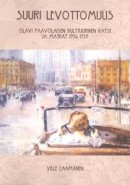 Ville Laamanen
Ville Laamanen
Suuri levottomuus. Olavi Paavolaisen kultturinen katse ja matkat 1936-39 [A great restlessness. Olavi Paavolainen’s cultural gaze and travels 1936-1939].
Turku: K&H, 2014. 346p., ill.
ISBN 978-951-29-5632-6
€32, paperback
The writer Olavi Paavolainen (1903-1964) was an important cultural critic in Finland in the years between the two World Wars. The historian Ville Laamanen’s doctoral thesis Suuri levottomuus explores how Paavolainen interpreted the encounter between the modern and totalitarianism. Laamanen examines Paavolainen’s journeys to National Socialist Germany and South America, where he was able to gain distance from Eurocentricity. Paavolainen published three books on the basis of these journeys, and these form the central sources for Laamanen’s research. The outbreak of the Winter War in Finland in 1939 prevented the publication of a fourth volume. This work would have focused on the Soviet Union, which at that point was little-known. The most important offerings of Laamanen’s book are the research results based on material from Russian archives which has hitherto remained unexamined. Paavolainen was not a communist, but was accorded VIP status in the Soviet Union and was able to gain a diverse view of the country. Laamanen also places Paavolainen in the broader cultural context of the 1930s. The book is at the same time a rigorous academic study and a well-written, gripping portrait of a still interesting Finnish intellectual during an important period.
Petri Pietiläinen: Koirien Suomi. Kansanperinnettä ja historiaa [Dogs in Finland. Folk tradition and history]
12 March 2015 | Mini reviews, Reviews
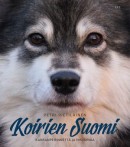 Koirien Suomi. Kansanperinnettä ja historiaa
Koirien Suomi. Kansanperinnettä ja historiaa
[Dogs in Finland. Folk tradition and history]
Helsinki: Finnish Literature Society, 2014. 239 pp., ill.
ISBN 978-952-222-540-5
€32, hardback
Non-fiction writer Petri Pietilä is the author of the award-winning book Koirien maailmanhistoria (‘Dogs in world history’), which deals with the general cultural history of the dog. In the first half of this lively and fascinating new book he discusses the dog in Finnish folk tradition, while in the second half he gives an account of the history of the dog in Finland to the present day. Dogs have been domesticated in the North European region for thousands of years. In folk poetry, such as the national epic, the Kalevala, the dog is first and foremost a house guard and a partner in hunting. In Finnish folk tradition, the dog is viewed more leniently than in other countries, and stories about hellhounds are rare. Yet the attitude towards dogs in Finnish proverbs is not an exclusively positive one. Pietilä also says that the dog’s change of status has been linked to its becoming a helper and beloved pet, and today there are more than half a million of them in Finland. In addition, they are increasingly being used in various work and service roles. The book also presents the six Finnish dog breeds, and includes a dog name day calendar.
Translated by David McDuff
Leena Liukkonen: Aatos
12 March 2015 | Mini reviews, Reviews
 Aatos
Aatos
Helsinki: Siltala, 2014. 155 pp.
ISBN 978-952-234-225-6
€28.50, hardback
Aatos Erkko (1932–2012) was a prominent newspaper publisher and principal owner of the Sanoma group; the company’s largest and most prestigious paper is Helsingin Sanomat. Reticent by nature and possessed of a difficult personality, Erkko nonetheless tried to act in accordance with his ideals. Rarely seen in the public eye, during his lifetime he was considered one of Finland’s most influential forces behind the scenes. Even though he was not keen on taking over the reins of the paper from his father Eljas (son of the original founder) whose wish it was, Aatos Erkko took the role seriously, developing Helsingin Sanomat into the Nordic region’s largest newspaper. Journalist and writer Leena Liukkonen’s small-scale, warm-hearted portrait is based mostly on Erkko’s later years, making use of discussions and correspondence, as well as interviews recorded by a Swedish colleague. Known as Finland’s richest man, Erkko talks frankly about his difficult relationship with his parents, and the disappointments of his life. The book leaves the impression of a friendship portrayed in terms that are open and honest.
Translated by David McDuff
Marjo Vilkko: Suomi on ruotsalainen [Finland is Swedish]
16 January 2015 | Mini reviews, Reviews
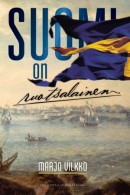 Suomi on ruotsalainen
Suomi on ruotsalainen
[Finland is Swedish]
Helsinki: Schildts & Söderströms, 2014. 321 pp.
ISBN 978-951-52-3419-3
€36, hardback
Finland was a part of the Swedish kingdom from the deep Middle Ages until 1809, when for a hundred years it was incorporated into Russia. The Swedish period left profound traces in Finnish society, and these were examined – with lively discussion – in the television series Finland is Swedish. Now the series scriptwriter and editor Marjo Vilkko has provided a more thoroughgoing treatment of the topic in her book. Although Finland is a country that shares Western and Nordic values, it differs from Sweden in several respects. For historical reasons and due to the presence of a significant Swedish-speaking minority, Swedish is still an official language; many things have moved from Europe to Finland via Sweden. However, at times the differences in Finland’s development have been emphasised by those wishing to propagate ‘original Finnish’ characteristics. With the use of fascinating examples and reflections drawn from history, Vilkko shows, for example, how Finland’s local government, legal system and Lutheran religion are to a large extent an inheritance from the Swedish period, with a continuous mutual interaction. The book moderately propagates the recognition of a common heritage and support for mutual understanding.
Translated by David McDuff
Herman Lindqvist: Kun Suomi oli Ruotsi [When Finland was Sweden]
18 December 2014 | Mini reviews, Reviews
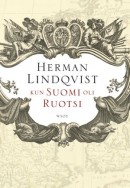 Kun Suomi oli Ruotsi
Kun Suomi oli Ruotsi
[When Finland was Sweden]
(original Swedish title: När Finland var Sverige, 2013)
Suom. [Translated from Swedish by] Heikki Eskelinen
Helsinki: WSOY, 2014. 497 pp., ill.
ISBN 978-951-0-40491-1
€44, hardback
The Swedish historian and journalist Herman Lindqvist is the author of dozens of popular non-fiction books. When Finland was Sweden is primarily intended for Swedish readers – an overview of the period when Finland was part of the Swedish kingdom – and it is partly based on new research. Finland became an integral part of the western neighbouring country in stages – including armed force – a process that was complete by the beginning of the fourteenth century. It remained an eastern borderland of the Kingdom of Sweden until the year 1809. The period was marked both by the rise of Sweden in the 16th century to become a great Baltic power and its decline in that role a hundred years later. Lindqvist connects up the different stages of Finland’s absorption into Sweden in a colourful and lively way. He shows how the influences went in both directions between the western and eastern part of the kingdom; the influence of the Finns could be seen both on the battlefields and in politics. The traces of the long time the two countries spent together are still visible today in both, thought in Finland they are stronger than in Sweden.
